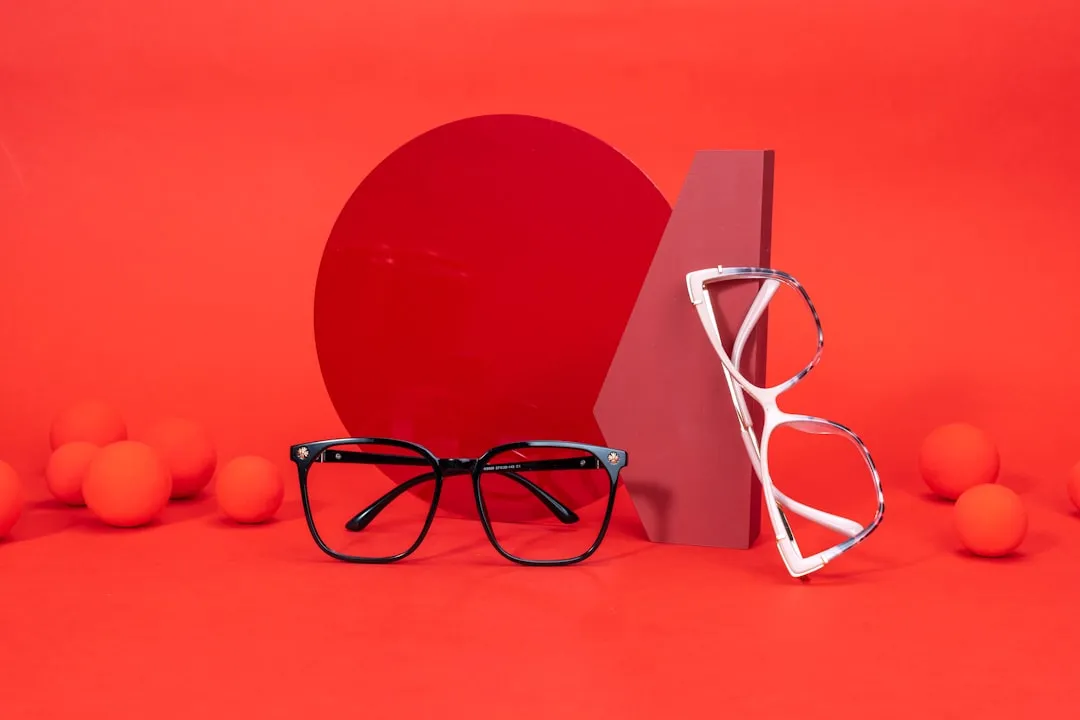Reviewed by Julianne Ngirngir
Instead of spending months programming a robot to fold your laundry, you slip on a pair of smart glasses, demonstrate the task yourself, and watch as the robot learns to replicate your movements in just a few tries. This isn't science fiction — it's happening right now in labs around the world.
The convergence of augmented reality and robotics is creating a revolution in how we train machines. Meta's recent collaboration with Georgia Tech has produced EgoMimic, a framework that uses Project Aria smart glasses to train robots with unprecedented efficiency. By recording first-person video of humans performing tasks, researchers have built datasets that are more than 40 times richer than traditional robot-collected data. Whether it's folding laundry or crafting pizza, the breakthrough lies in capturing tacit knowledge — the subtle techniques that experts can't easily explain but smart glasses can record.
What you need to know:
AR-powered robot training eliminates the need for specialized programming knowledge
Smart glasses capture spatial reasoning and decision-making processes, not just surface actions
Business owners can now train robots directly using their own expertise
Efficiency gains of 21-64% are already being demonstrated in real-world applications
What makes AR-powered robot training so revolutionary?
Traditional robot training has always been the domain of specialists. You needed extensive programming knowledge, expensive equipment, and countless hours of fine-tuning to teach a robot even basic tasks. But AR teleoperation systems are changing this dynamic completely.
The XRoboToolkit framework demonstrates just how powerful this technical foundation can be. Built on the OpenXR standard, it features low-latency stereoscopic visual feedback and supports diverse tracking modalities including head, controller, hand, and auxiliary motion trackers. What's remarkable is that researchers validated data quality by training VLA models that showed robust autonomous performance — essentially proving that AR-based training produces robots that can work independently.
This holographic richness transforms the XRoboToolkit's technical capabilities into something approaching human-level understanding. While traditional systems capture mere surface actions, AR teleoperation records the decision-making process itself. Studies show that AR design elements enhance both explainability and efficiency in human-robot interaction. When a human teaches a robot kitchen tasks through demonstration using AR, the robot can then show its plan for solving novel tasks back to the human for validation. It's like having a conversation with your future robotic assistant, except the conversation happens through shared virtual space.
How smart glasses are democratizing robot education
Building on the XRoboToolkit's technical foundation, Meta's Project Aria glasses transform this sophisticated framework into an accessible tool. The five-camera sensor suite doesn't just record actions — it captures the spatial reasoning and environmental awareness that separate novice from expert performance.
Here's where the hardware specifications become transformative. Meta's Project Aria glasses come equipped with:
Five specialized cameras (monochrome, RGB, and eye-tracking)
Inertial Measurement Units (IMUs) for motion tracking
Environmental sensors for contextual awareness
Advanced microphones for audio cues
The beauty is that this approach captures not just what you're doing, but how you're doing it — the subtle hand movements, the timing patterns, and the environmental awareness that makes human expertise so valuable.
Think about that restaurant owner struggling to keep up with pizza delivery orders. The revolution happening here means a pizza cook, not a robotics PhD, can now train robots with their specific recipes and techniques. The results speak for themselves: Dr. Sarah Zhang's research has demonstrated 40% improvements in the speed of training healthcare robots using smartphones and digital cameras. When you combine that with the rich sensory data from AR glasses, the potential becomes staggering.
Beyond simple mimicry: when robots understand context
The contextual understanding enabled by EgoMimic's rich data capture now extends into collaborative decision-making. When AR systems display virtual objects and robot intentions, they're leveraging the same spatial reasoning patterns the glasses captured during demonstration. Virtual objects, virtual robots, and XAI cues are displayed through devices like the HoloLens 3, creating a shared environment where both human and robot can operate with full awareness of each other's intentions.
Industrial applications showcase how this contextual awareness translates into practical benefits. Using HoloLens devices for robot commissioning and programming, companies can visualize digital twins and display holographic forecasts of robot actions. By overlaying planned movement trajectories and tool parameters within Microsoft's recommended working distance of 80cm-200cm, operators can identify potential collisions or inappropriate actions before they happen — turning the technical specifications into user-centered safety features.
The Taqtile Manifest system provides compelling validation of this approach. The U.S. Air Force has seen significant improvements in training results for aircraft maintenance using mixed-reality guidance. Recruits using AR-based instruction completed all tasks without assistance and zero errors, while reducing error occurrence by 36 percent overall — demonstrating how contextual understanding extends from robot training into human skill development.
The efficiency revolution: numbers that matter
These efficiency gains directly result from the contextual training we've explored. When robots understand not just individual tasks but workflow relationships — captured through AR demonstration — they anticipate needs rather than simply responding to commands.
Let's talk about the metrics that really matter to your bottom line. Studies of AR-based manufacturing systems show 21-24% reduction in task completion time and 57-64% reduction in robot idle time compared to baseline systems. When you're running a factory or managing a warehouse, these aren't just interesting statistics — they represent the cumulative impact of robots learning decision-making patterns rather than just task sequences.
Human-robot collaboration research conducted with 26 participants revealed fascinating insights about user experience. While standard joystick interfaces felt more dependable to users, the AR interface reduced physical demand and task completion time while increasing robot utilization. The key finding? Users' freedom of choice to collaborate with robots affects their perceived usability of the system — suggesting that AR training creates more intuitive partnerships.
VARIL framework studies with 25 participants demonstrated how learned AR visualization policies significantly increased human-robot team efficiency while reducing distraction levels for human users. This progression from basic training to advanced collaboration shows how the AR foundation enables increasingly sophisticated interactions over time.
Learning from teleoperation: the next frontier
The AR training revolution we've explored reaches its culmination in Learning from Teleoperation (LfT). While smart glasses capture what humans do, LfT systems understand how and why — recording not just visual demonstrations but the force feedback and micro-adjustments that define expertise.
Recent LfT research shows how frameworks can capture operator movements and manipulation forces during teleoperation, then use this data to train machine learning models capable of replicating and generalizing human skills. This represents a natural evolution from the AR demonstration methods we've discussed, adding tactile and force dimensions to the visual and spatial data.
Self-supervised 6-DoF grasp pose detection through AR teleoperation systems demonstrates the sophisticated learning now possible. The system efficiently learns from human demonstrations and provides complex grasping poses without requiring manual annotations. In real-world experiments, robots learned to grasp unknown objects within just three demonstrations — showing how the AR foundation enables rapid skill acquisition.
Vision-based teleoperation systems like AnyTeleop push these boundaries even further. These unified systems support multiple different arms, hands, realities, and camera configurations within a single framework, outperforming previous systems designed for specific robot hardware. This represents the maturation of AR training concepts into truly general-purpose learning platforms.
What this means for you right now
The technical progression we've traced — from basic AR demonstration through contextual understanding to advanced teleoperation — is already transforming multiple industries. Healthcare robotics saw a market size exceeding $9 billion in 2022, with AR-based surgical navigation systems like VisAR operating with submillimeter accuracy. The integration of AR and medical robotics follows Halsted's training principle: "see one, do one, teach one" — exactly the progression we've explored with robot training.
Smart wearables are set to become the hottest trend in 2025, with AI glasses leading the charge. This market momentum means the AR training capabilities we've discussed will rapidly become accessible to smaller businesses and specialized applications.
PRO TIP: The revolution happening right now means that expertise transfer — from master craftsperson to robot, from experienced technician to automated system — is becoming as simple as putting on a pair of glasses and doing what you already know how to do. This isn't just about convenience; it's about preserving and scaling human knowledge in ways previously impossible.
Where do we go from here?
The convergence we've traced — from basic AR demonstration through contextual understanding to advanced teleoperation — culminates in robots that don't just copy human actions but comprehend human reasoning. EgoMimic is expected to be publicly demonstrated at the 2025 IEEE Engineers' International Conference on Robotics and Automation beginning May 19, marking a milestone in accessible robot training technology.
Google's DeepMind Open X-Embodiment database already contains 500+ skills and 150,000 tasks from 22 robot embodiments, with their RT-1-X model achieving 50% success rates compared to in-house methods. The integration of large language models with robotic systems means robots are gaining the contextual knowledge that makes human decisions sensible — they understand that putting a coffee cup on a table makes sense, while putting a table on a coffee cup doesn't.
This knowledge integration represents the final piece of the puzzle we've explored. The AR training methods capture human actions and decision-making patterns, while AI reasoning provides the broader contextual understanding that makes those patterns truly intelligent. Your next robotic assistant might learn its most important skills not from a programmer, but from you — simply by watching through a pair of smart glasses as you demonstrate the expertise that no algorithm could anticipate, but every business desperately needs.
























Comments
Be the first, drop a comment!